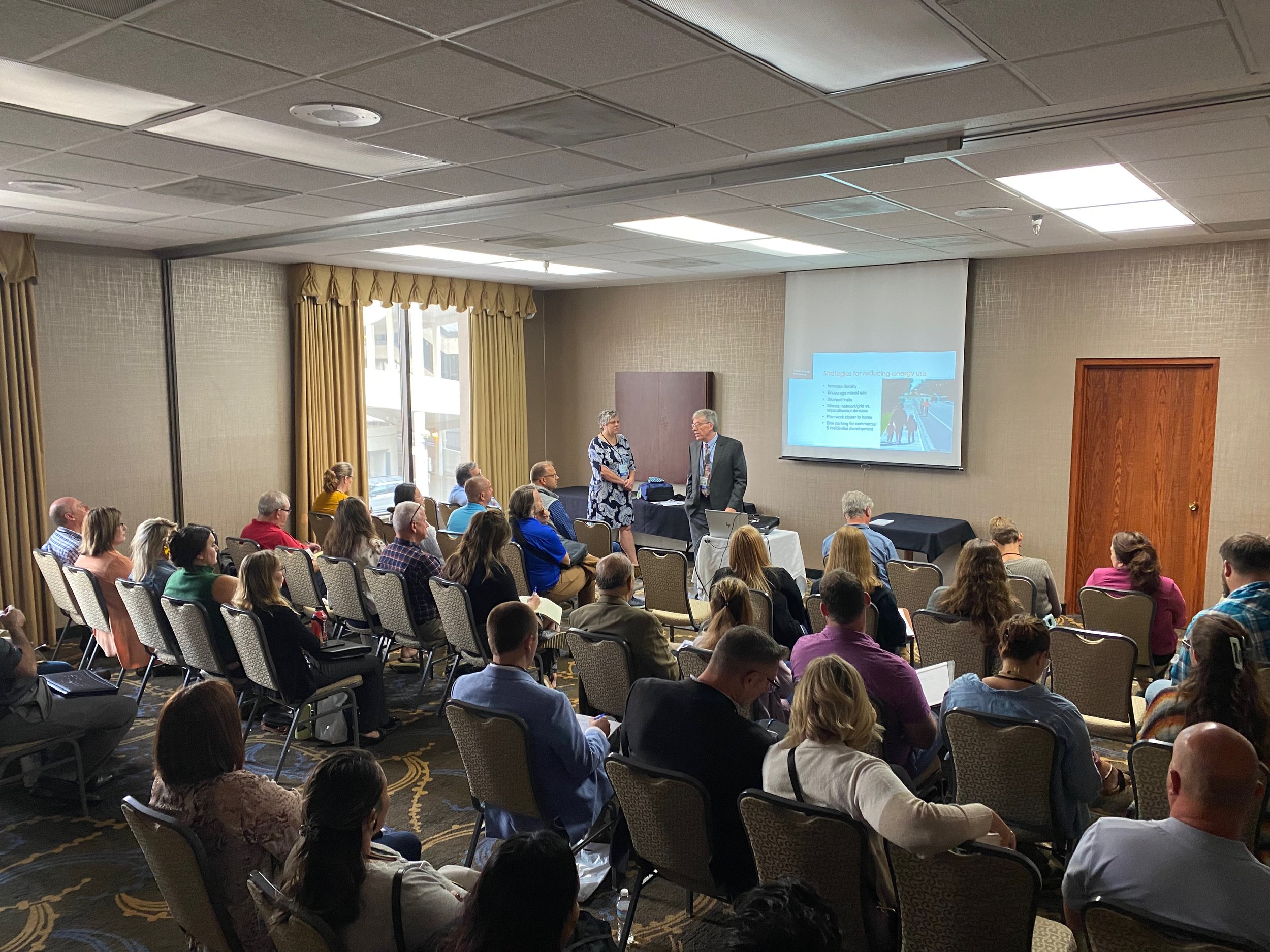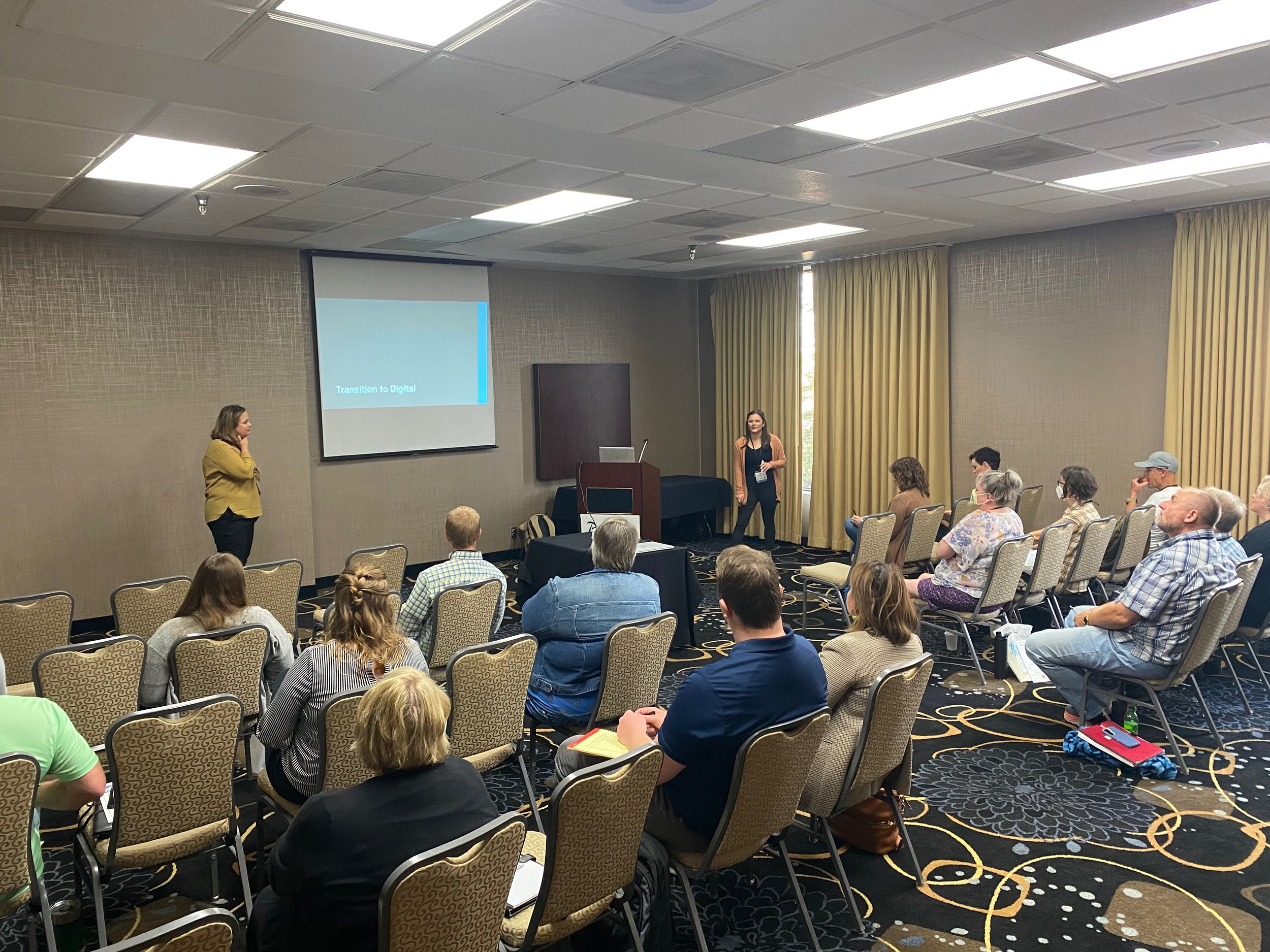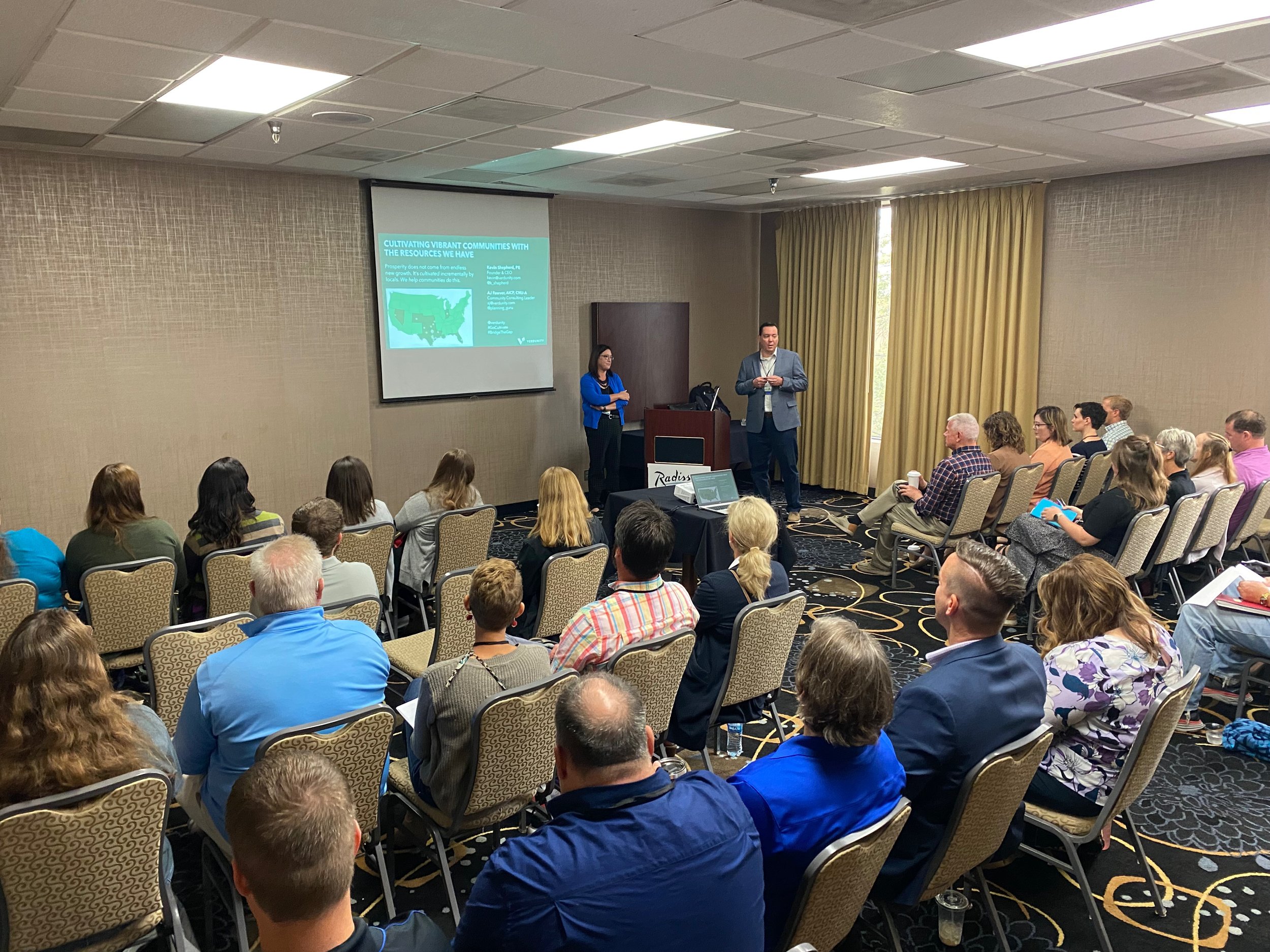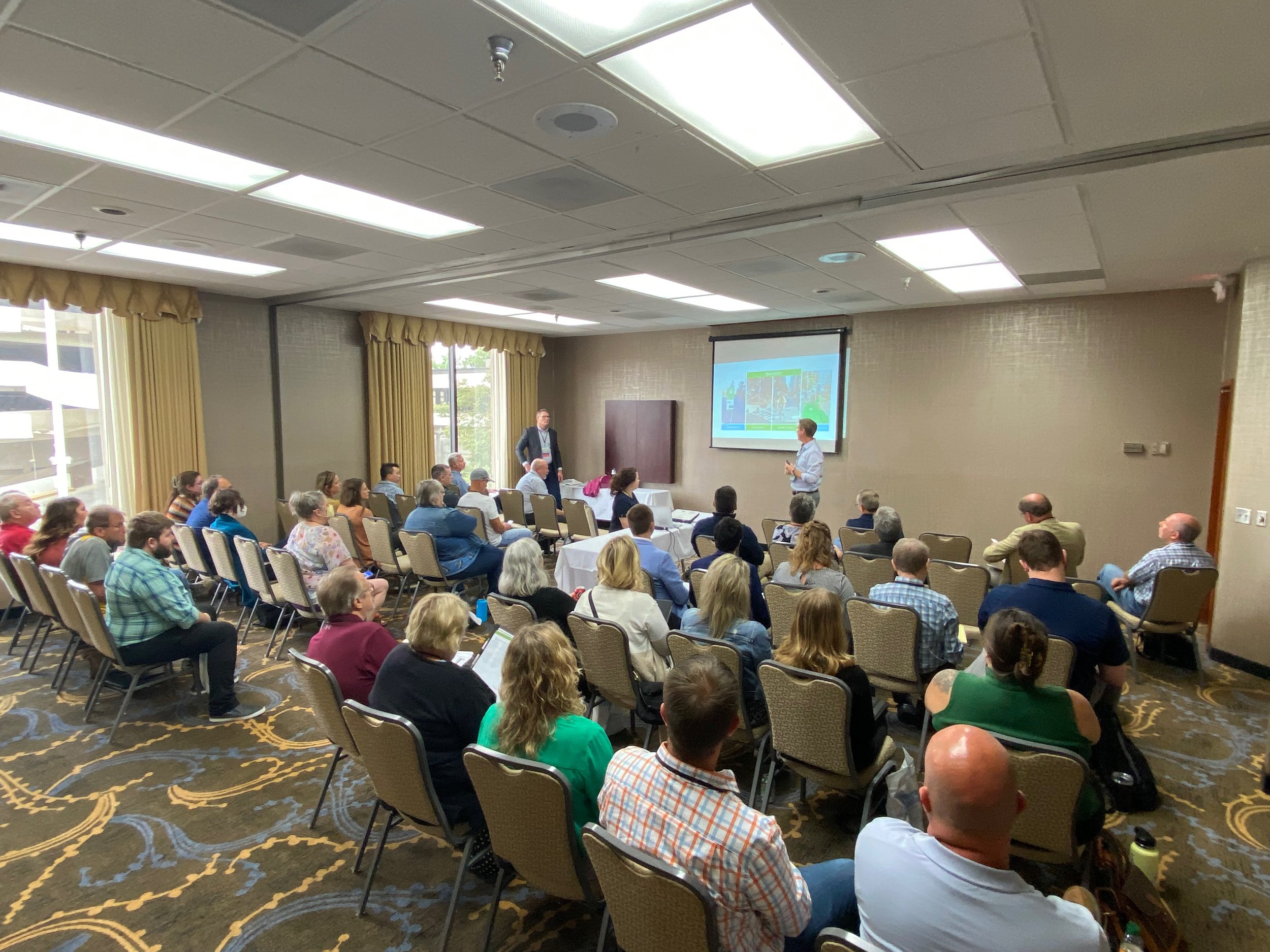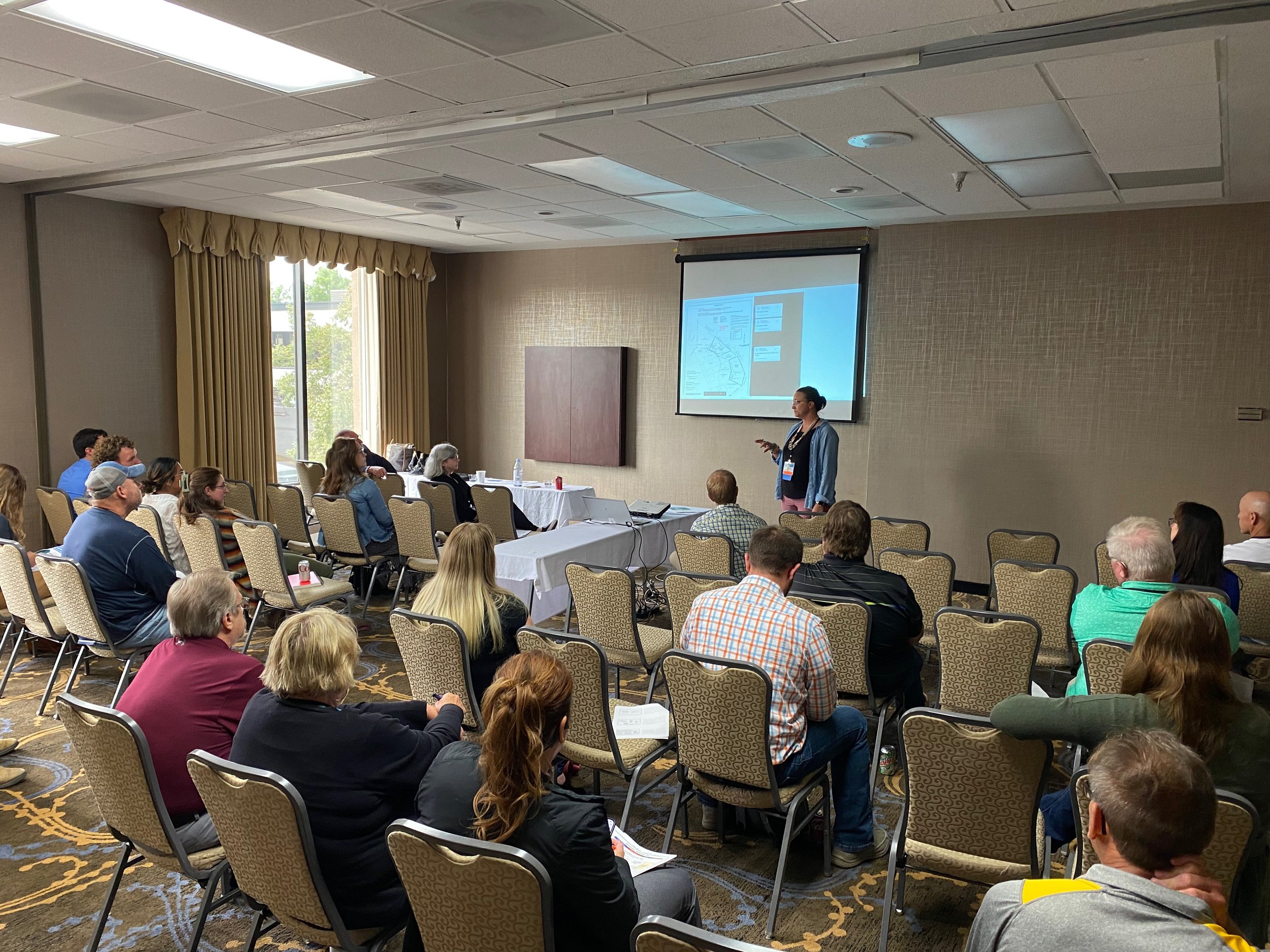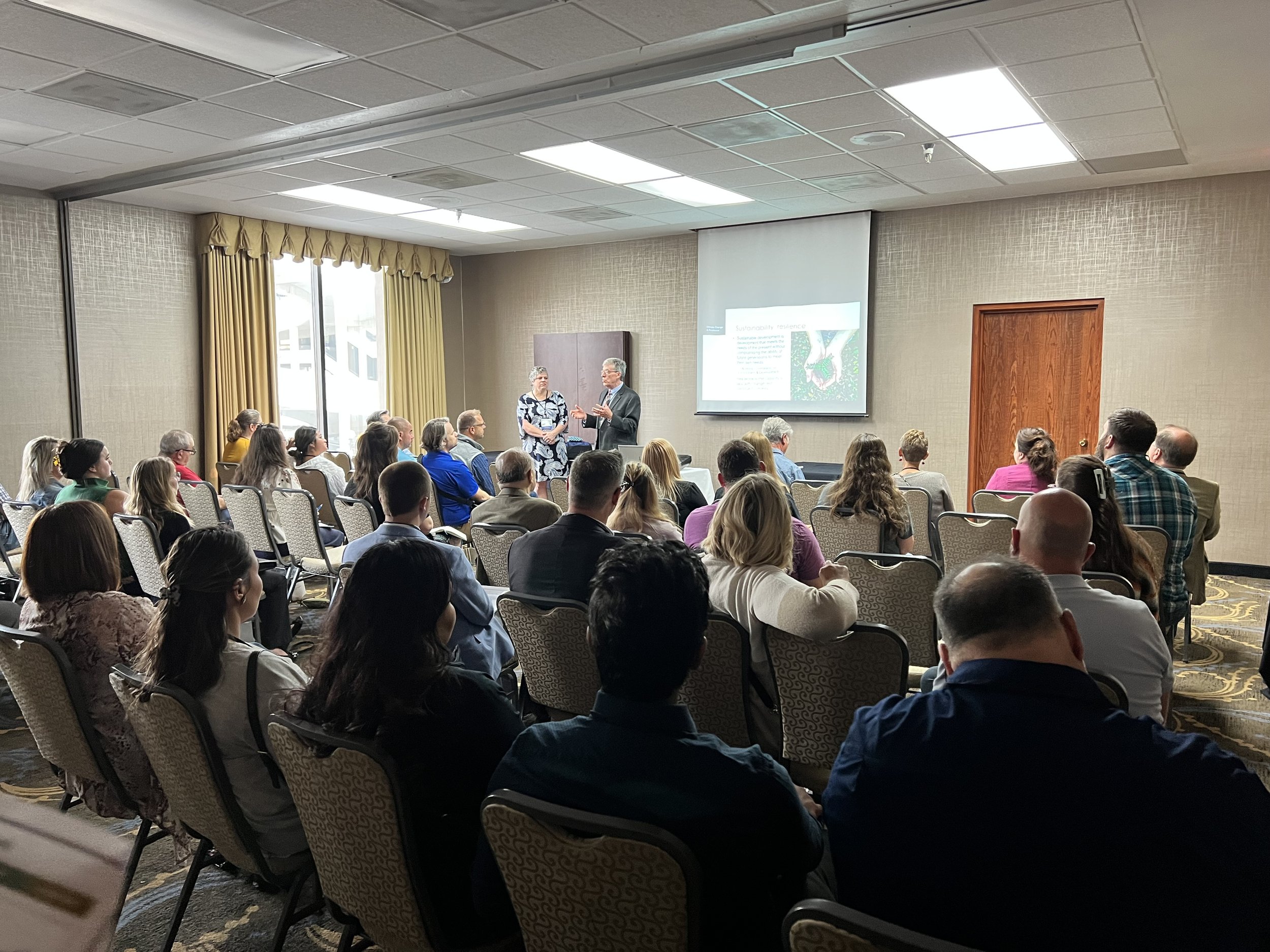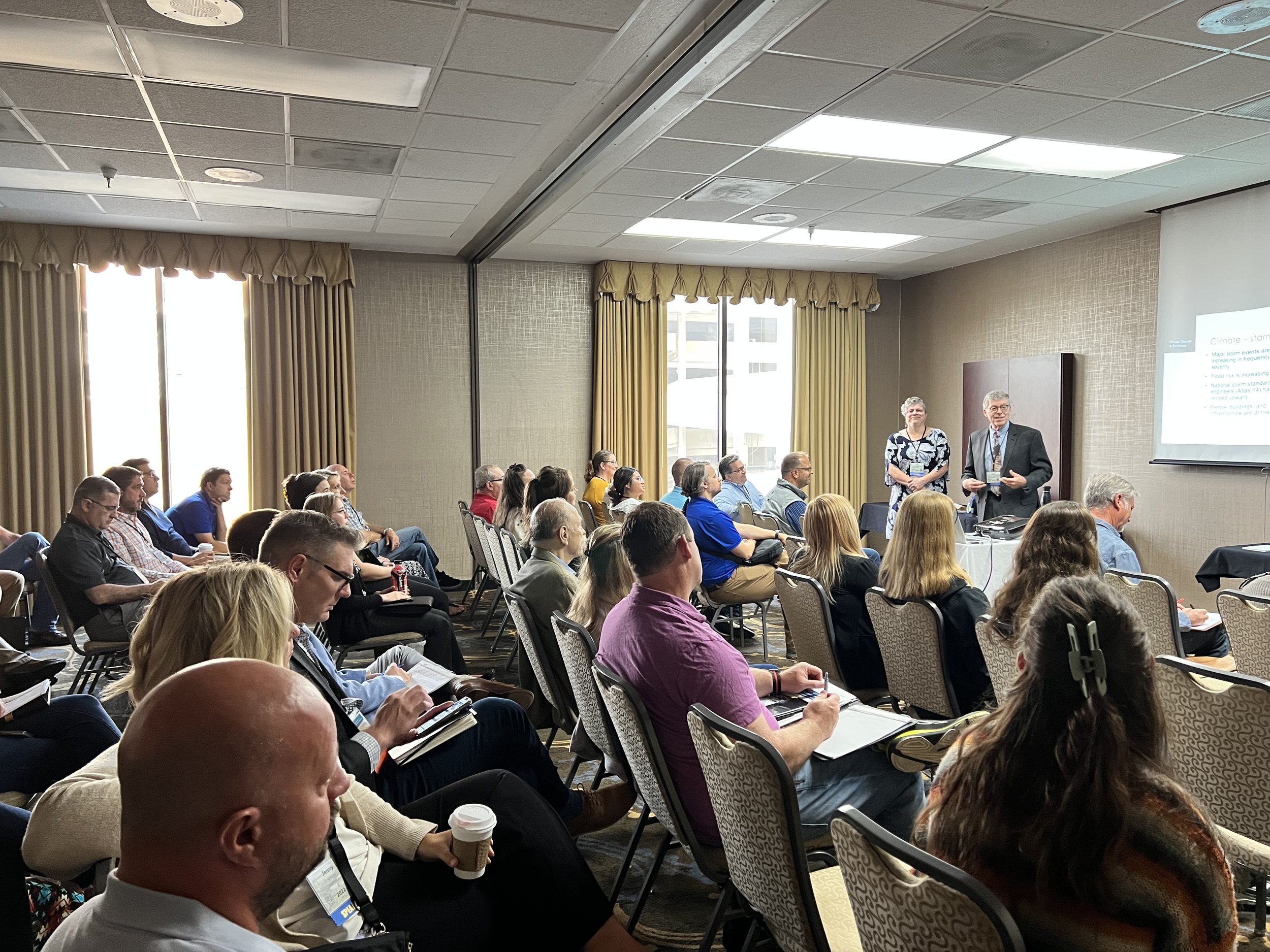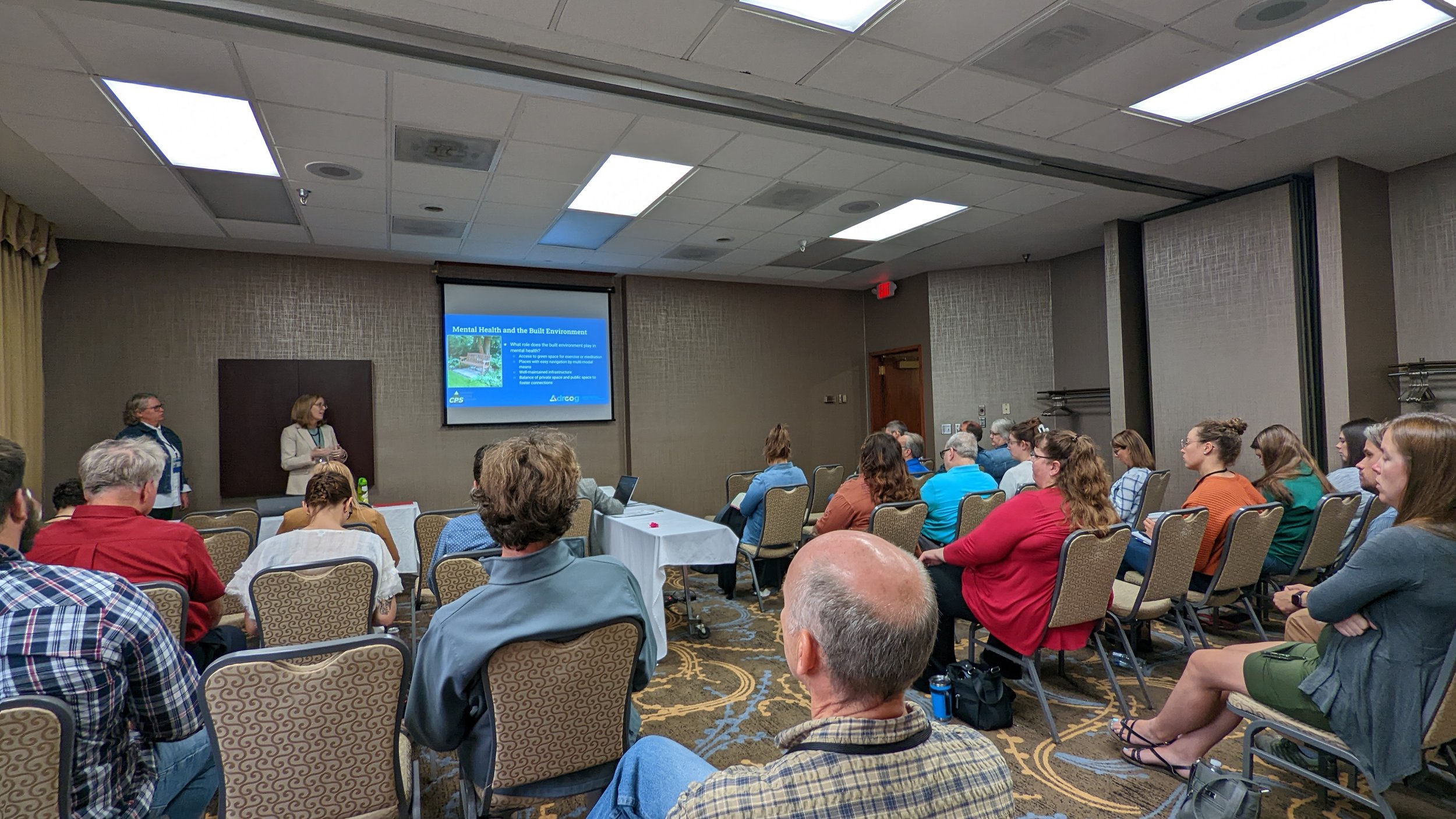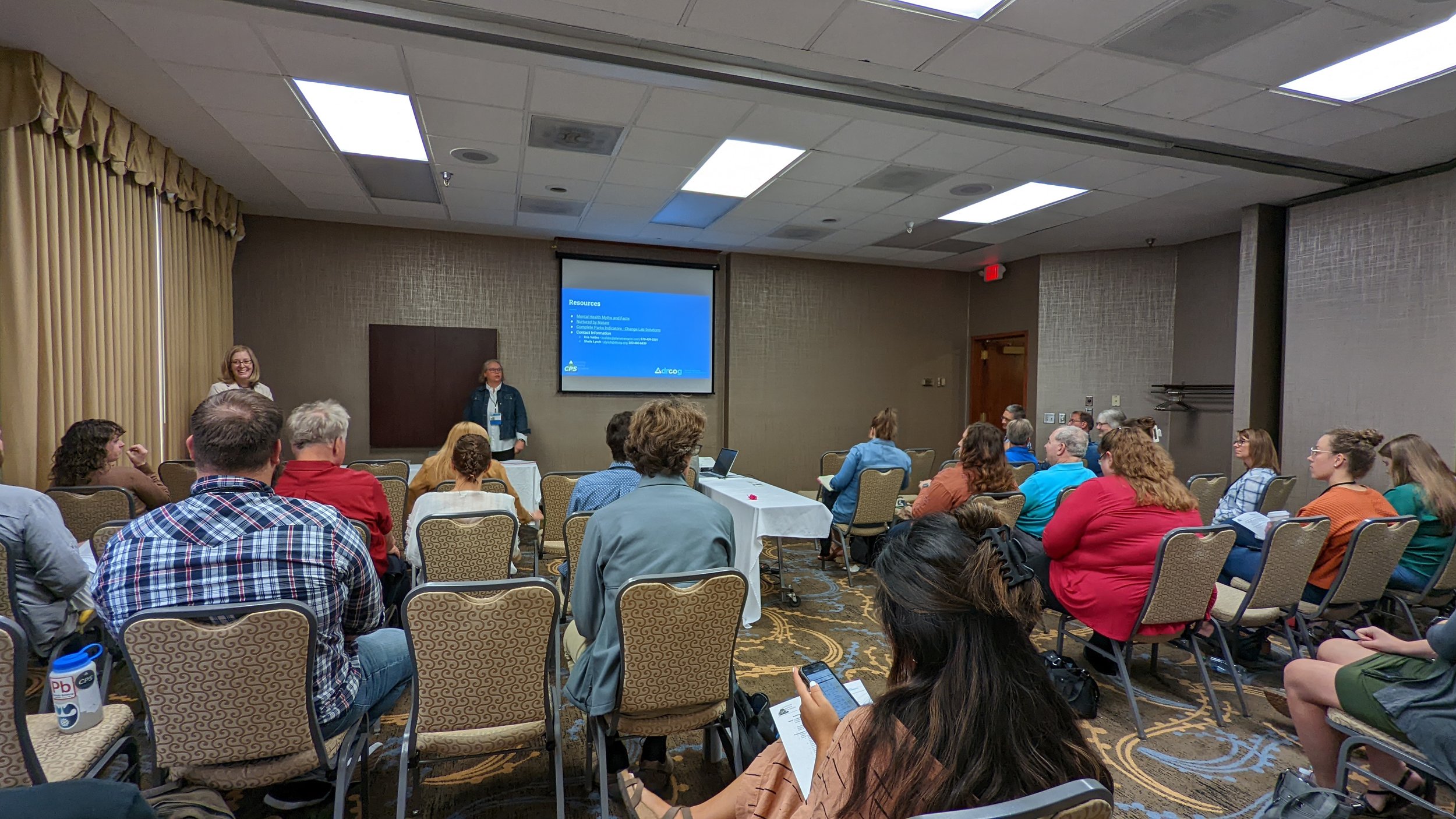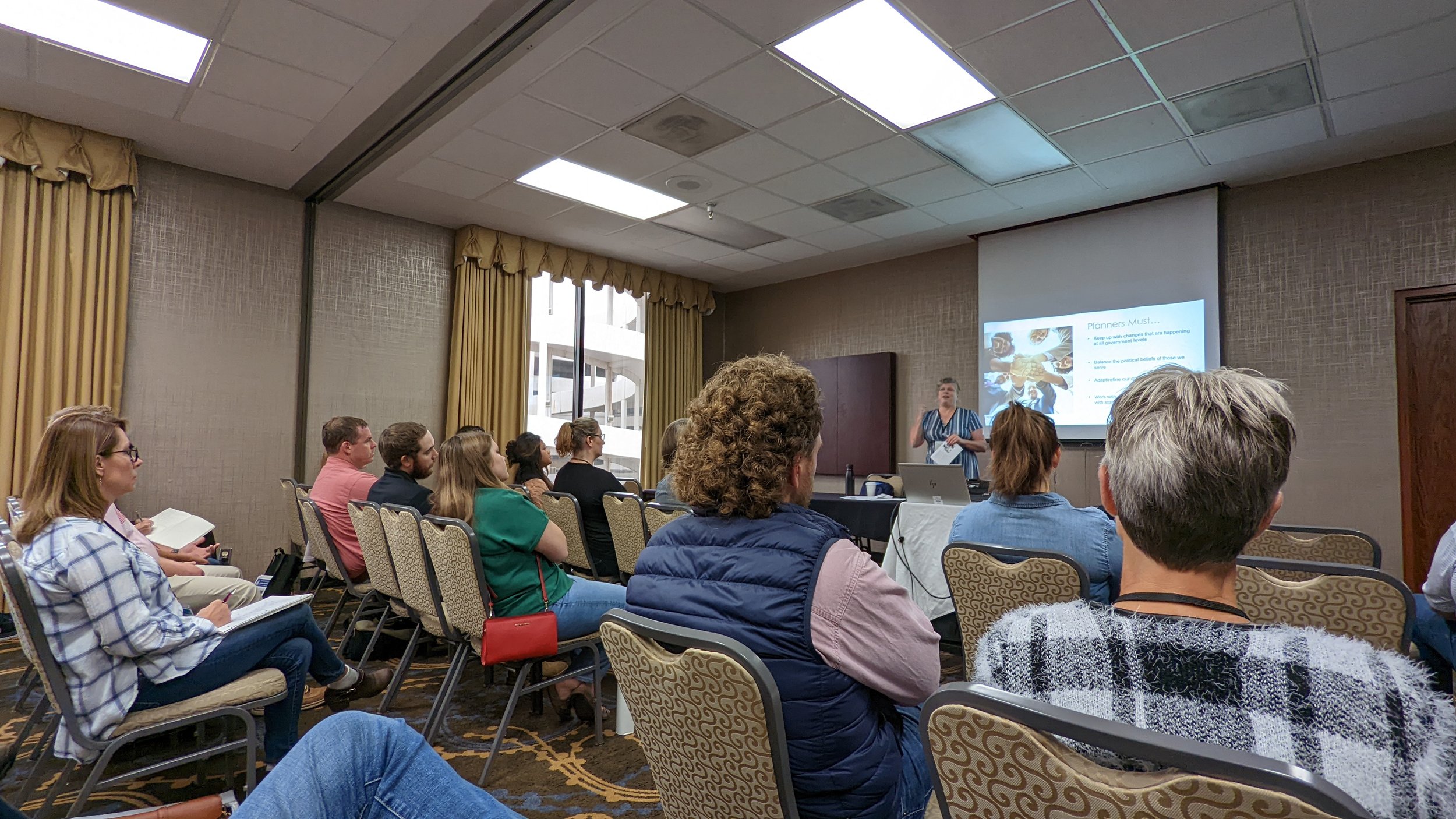2022 Western Planner Conference - Session Summaries
by Donald Kress
Session B.2 Wednesday 10:30 a.m. Demonstration Projects: A North Dakota Experience
This session, presented by staff from the City of Bismarck, ND planning department and the North Dakota Department of Transportation (ND DOT) explained the purpose and advantages of demonstration projects for changes to the right of way, such as a change from 4-way stop to roundabout and proposed narrowing of lanes. What was particularly useful to me in this session was the presenters’ explanations of the mechanics of setting up and operating the demonstration project, and how to evaluate observations and outcomes of the demonstration project.
Session C.3 Wednesday, 2:15 p.m. Evaluating Your Parking Requirements. . . . Again
This session, presented by planning department staff from the cities of Grand Forks and Bismarck, ND, described how these cities reduced their overall parking requirements and what the outcomes of those reductions were. In my city, requests for parking reductions are frequent. These are handled through a public hearing process for large-scale reductions and through an administrative process for small-scale reductions. We believe these frequent requests for reductions may mean that our city’s parking regulations are no longer best practices and are out of step with 21st Century development. The Bismarck and Grand Forks examples were useful to analyze our own parking situation against, especially since we are at the beginning stages of revising our zoning ordinance—a revision that will definitely include revised parking regulations.
Session D.1 Wednesday, 2:15 p.m. From Urban Renewal to Renewed Urbanism: Transforming Moorhead Center Mall into the Center for 21st Century Downtown Moorhead.
Even though Minnesota is not in the Western Planner region, it was interesting to see this presentation from Fargo, ND’s sister city across the Red River of the North. I was particularly interested in this presentation as I remember when this mall opened in 1972, and have generally followed its progress over the decades as a Fargo resident and shopper at this mall. I have experience in shopping mall management, prior to my planning career. Additionally, I am acquainted with many of the presenters of this session. All buildings eventually become obsolete—they no longer fully effectively serve their original function. How to deal with these buildings and sites, especially with shopping malls that usually are large buildings on large, almost completely impervious sites, is a challenge to land use planners. The plan presented for Moorhead Center Mall is an innovative redevelopment of this site. It was exciting to see some really new ideas for this site.
Session E.3 Thursday, 8:30 a.m. How COVID Fueled Innovation and Flexibility or NDDOT on Public Outreach During a Pandemic
Effective community outreach is critical to the planning process. Lessons learned by the ND Department of Transportation as they went forward with their statewide transportation plan during the COVID pandemic were:
Reach people where they are—don’t just schedule an in-person meeting at some location and expect people to come to you
By meeting virtually and having the ability to comment online, you can use website analytics to evaluate the location and responses of your meeting attendees and online respondents
Infographics and animation are effective ways to stimulate interest and public comment, rather than just having pages of text.
Session F.2 Thursday, 9:45 a.m. Building Communities for the Sake of Mental Health
As the mental health of the nation’s citizens has come increasingly to the forefront recently, it was interesting to see this presentation on mental health in relation to land use. While some of the concepts presented in this session, such as green space, availability of a variety of travel modes, and public vs; private space are familiar to planners, the idea the presenters put forth that public health, particularly behavioral health, affects of a proposed development project should be considered during project review really tied mental health to land use. It may be some time before my city implements such a review, but the door is now open and the conversation started for this to happen.
Session G.2 Thursday 11:00 a.m. Solar Power in Your Community
I had done some work with solar about 10 years ago. It was interesting to get this update on the current state of solar technology and the explanation of the difference between such terms as solar rights/solar ready/solar mandates. Other useful takeaways were the concept of energy insecurity and of integrating solar into the comprehensive plan, particularly since my city is just embarking on a new comprehensive plan for the entire city and extra-territorial jurisdiction.
Session H.1 Thursday, 2:00 p.m. Veterans Community Project: Sioux Falls Public/Private Partnership
This session was useful to me as it illustrated a well-managed, purpose-driven tiny house community. Too often we get questions and even proposals for tiny houses and tiny house developments that are rather random or poorly designed for the intended site. This community incorporates some of the behavioral health ideas put forth in a previous session in relation to the design of the project for the comfort and safety of the residents, who are veterans dealing with the challenges of being homeless. Perhaps one of these communities will be coming to our city soon.
Session I.2 Thursday, 3:15 p.m. The Geographic Approach to Planning
This session looked at new technologies in GIS and how these technologies can be used to achieve planning goals. My GIS technical knowledge is limited. Fortunately, my department’s GIS planner also attended this session, so afterward I was able to discuss with her how our department could use these technologies.
Session J.1 Thursday, 4:30 p.m. How to Successfully Plan and Fund Tribal Infrastructure and Economic Development Projects
I am not involved in working with tribal governments in my current position. I attended this session mainly to understand the challenges of working on tribal lands and within the federal and tribal government structures.
Session L.2 Friday, 10:15 a.m. The Historic Significance of Mid-Century Neighborhoods—An Examination of Highland Acres, Bismarck, ND
I live in a mid-century home in a mid-century neighborhood, so I wanted to go to this session. The presenters used their presentation on the history of Highland Acres to inform attendees about the history of this development and the different aspects of historic preservation, such as the concepts of integrity and significance. The interaction between local and state governments and private sector archaeological consultants necessary to get Highland Acres nominated for its historic significance was interesting to learn about.
Session M.2 Friday, 11:30 a.m. Fast, Funny, and/or Passionate
Two of the presentations in this pecha kucha session were about data centers and bitcoin mining. I have dealt with regulating bitcoin mining on a small scale in our city, but was not familiar with the large-scale operations described in this session. The city of Bismarck’s ordinance related to data centers is one I feel our city should review for inclusion in our upcoming revised land development code.
About the Author
Donald Kress is the Current Planning Coordinator for the Fargo Department of Planning and Development. Prior to that, he was a planner in Los Angeles County before returning to his home state as a principal planner in Williston City. He holds a Bachelor’s in Geography/History from North Dakota State University, Fargo and a Master of City and Regional Planning from California Polytechnic State University, San Luis Obispo.

